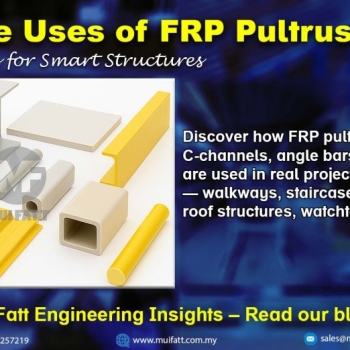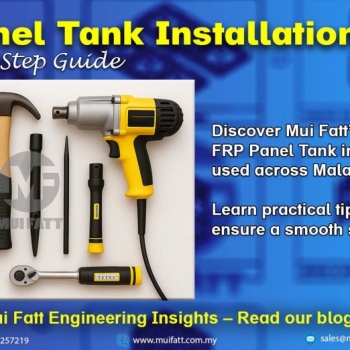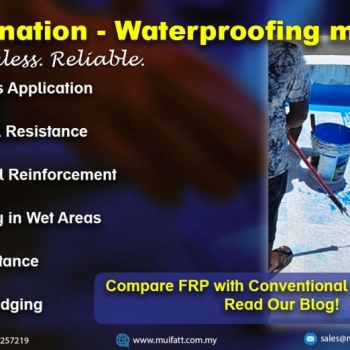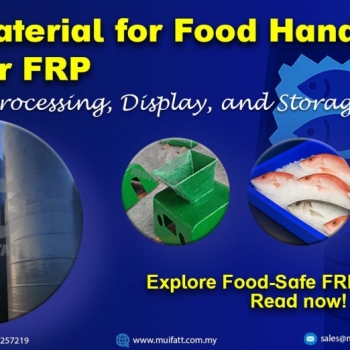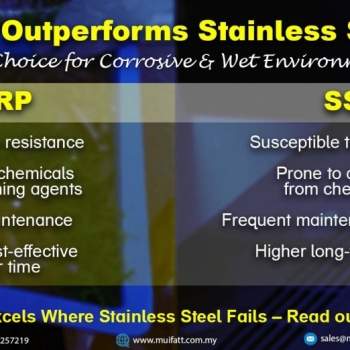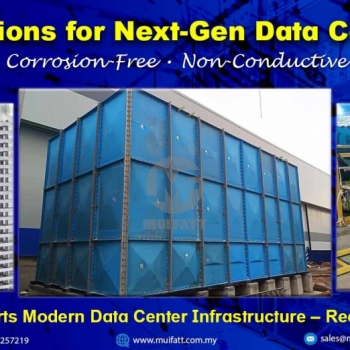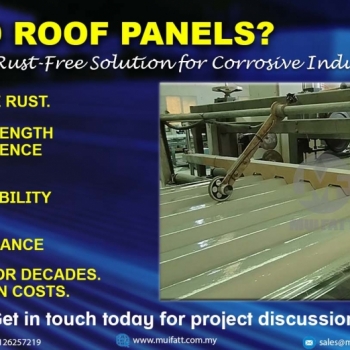FRP pultruded profiles are reshaping structural possibilities across Malaysia. From STP staircases to public park shelters, explore how these modular components enable custom FRP solutions—only from Mui Fatt.
FRP Panels vs Traditional Alternatives: The Ultimate Guide to Durability and Sustainability
29 May 2025
- Key Takeaways
- What Are FRP Panels?
- Key Advantages of FRP Panels
- FRP vs Traditional Alternatives (Steel, Aluminum, Plywood, PVC)
- Sustainability and Long-Term Performance
- Frequently Asked Questions (FAQs)
Key Takeaways
-
FRP panels offer unmatched durability and corrosion resistance compared to steel, plywood, and PVC.
-
Ideal for both indoor and outdoor use and projects requiring thermal insulation, such as cold trucks, and weather resistance, such as kiosks.
-
Lightweight design simplifies installation and reduces long-term costs.
-
Sustainable solution with a longer lifespan potential.
-
Proven in real-world applications like the MyKiosk project and cold truck panel assembly, perfect for projects demanding long-lasting performance and environmental responsibility.
When it comes to modern construction and assembly, choosing the right material can significantly affect the performance, durability, and sustainability of a structure. In this article, we’ll explore how FRP (Fiberglass-Reinforced Plastic) panels compare to traditional materials like steel, aluminum, plywood, and PVC, with real-world examples from our MyKiosk project and Cold Truck panel assembly. These examples illustrate why FRP is a preferred choice for modern, high-performance applications.
What Are FRP Panels?
FRP panels are composite materials made from a polymer matrix reinforced with fiberglass. They are known for their lightweight properties, corrosion resistance, and high strength-to-weight ratio, making them ideal for indoor and outdoor applications. They're produced through processes like continuous lamination, pultrusion, and hand lay-up, offering flexibility for various designs and needs.
Key Advantages of FRP Panels
-
Corrosion-resistant: Unlike metal, FRP withstands harsh environments without rust or degradation.
-
Lightweight and strong: Easier to transport, install, and handle while offering excellent mechanical properties.
-
Durable & Impact-resistant: Can withstand physical impact without damage.
-
Thermal insulation: Ideal for temperature-sensitive environments like cold trucks.
-
Low maintenance: Reduces lifecycle costs, no need for regular painting or sealing.
-
Customizable: Available in various thicknesses, colors, and finishes.
-
Sustainable: Long lifespan with proper care and maintenance, reduces environmental impact.
FRP vs Traditional Alternatives
| Feature | FRP Panels | Steel/Aluminum | Plywood | PVC |
|---|---|---|---|---|
| Durability | High, impact and corrosion resistant | High, but prone to corrosion or dents | Moderate, prone to rot & moisture damage | Moderate, brittle over time |
| Weight | Lightweight | Heavy | Moderate | Light, but less durable |
| Thermal Insulation | Excellent for cold storage | Poor | Poor | Poor |
| Sustainability | Long lifespan | High embodied energy, recyclable | Non-recyclable, prone to disposal issues | Some recyclability, but limited lifespan |
| Maintenance | Low | High, needs painting or rust protection | High, needs sealing and replacements | Moderate |
| Installation | Easy, customizable shapes and sizes | Requires more manpower | Simple but prone to damage | Easy, but less structural integrity |
| Cost-effectiveness | Long-term savings due to durability | Higher upfront and maintenance costs | Low initial cost, but high maintenance | Low cost, but low lifespan |
Case Study: MyKiosk Project – Durability Meets Sustainability
In our MyKiosk project, we supplied FRP roof and side panels that outperformed traditional materials. These panels demonstrated:
-
Superior weather resistance: Withstood outdoor elements without corrosion.
-
Lightweight efficiency: Simplified transportation and installation processes.
-
Eco-friendliness: Long-lasting panels reduce the need for replacements, cutting down on waste and environmental impact.
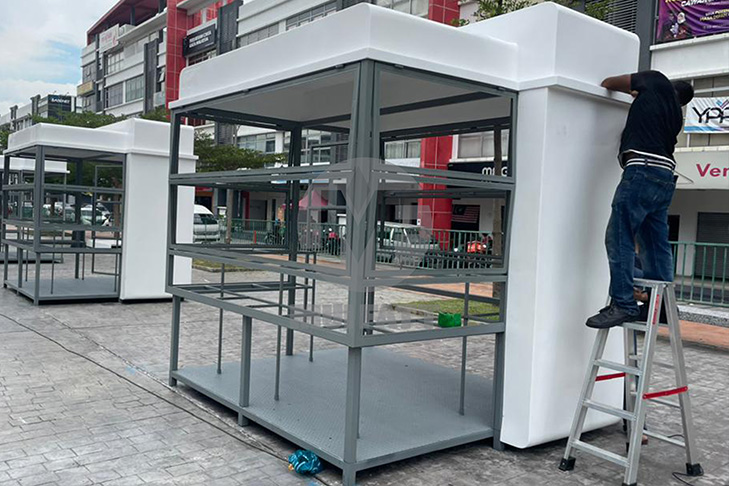
Read more about our MyKiosk Project - MyKiosk Project: FRP Roof and Side Panels Supplied to Local Councils
Cold Truck Assembly – Durability & Insulation
For cold truck panel assembly, FRP panels ensure:
-
High thermal insulation: Maintained internal temperatures effectively for perishable goods.
-
Weight reduction: Improved fuel efficiency and reduced strain on vehicle components.
-
Moisture and impact resistance: Prevented warping, rotting, and rusting, even under challenging transport conditions.
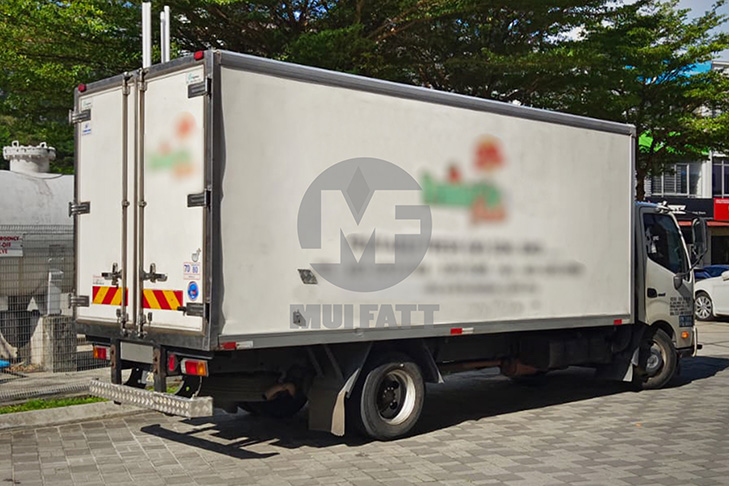
Learn more about Insulating Your Cold Truck Body with Fiberglass Flat Sheets
Sustainability and Long-Term Performance
FRP panels offer a unique combination of longevity and eco-friendliness:
-
FRP panels offer decades of service life with minimal maintenance requirements.
-
They’re resistant to harsh environments, extending their usable lifespan.
-
Lower lifecycle carbon footprint compared to steel and plywood.
-
Minimal waste generation from installation and end-of-life disposal.
Frequently Asked Questions (FAQs)
Can FRP panels be used outdoors?
Yes, they’re designed to withstand UV, moisture, and temperature fluctuations.
How does FRP compare to plywood for durability?
FRP is significantly more durable, resistant to moisture, and requires less maintenance.
Are FRP panels more expensive than plywood?
Initial costs are higher, but lifecycle savings make FRP more cost-effective.
Do FRP panels provide insulation?
Absolutely! Their excellent thermal insulation properties make them ideal for cold trucks and storage areas.
How sustainable are FRP panels?
They have a long lifespan, reduce overall environmental impact.
#FRPpanels #MyKioskproject #ColdTruckpanel #FRPvsalternatives #durability #sustainability #coldtruckinsulation #FRPforkiosks
Disclaimer:-
The content on this site is for general information and entertainment purposes and does not constitute legal counsel. We strive to keep our information as accurate as possible. However, we make no warranties about the completeness, accuracy, reliability, suitability, or availability with respect to the information contained on this page. You should rely on this information at your own risk. This website may include links to other third-party sites. These links are provided as a convenience to you as a reader, user, or browser only. We make no representation, warranty, or guarantee, nor do we endorse or take responsibility for any of the content of such sites.
Stay in touch with us if you’re interested in hearing from us promptly.
- Website - https://www.muifatt.com.my/home/
- Facebook - https://www.facebook.com/muifattmarketing
- Instagram - https://www.instagram.com/muifattmarketing/
- Google - https://goo.gl/maps/WxVY13gNcaRTS7Jp6
- Youtube - http://www.youtube.com/@MuiFattMarketing
- TikTok - https://www.tiktok.com/@muifattmarketing
- LinkedIn - https://www.linkedin.com/company/mui-fatt-marketing-sdn-bhd-
- Linktree - https://linktr.ee/muifattmarketing
- Shopee - https://www.shopee.com.my/muifattmarketing
- Lazada - https://www.lazada.com.my/shop/mui-fatt-marketing
Recent Blog
Mui Fatt Engineering Insights - FRP Panel Tank Installation
Get to know the step-by-step assembly process of FRP sectional panel tanks, based on Mui Fatt’s industry-proven practices. This easy-to-digest guide is ideal for project managers, contractors, and technical personnel involved in water storage tank installation across Malaysia.
Comparing FRP Waterproofing with Traditional Systems
Is FRP lamination a better waterproofing method than traditional systems? Explore this complete guide with real project examples and see why FRP is gaining traction across Malaysia.
Benefits of FRP in Food Handling & Processing
With hygiene, durability, and corrosion resistance at its core, FRP (Fibreglass Reinforced Plastic) is becoming a preferred material in the food industry. This article explores why FRP is ideal for food handling equipment such as supermarket fish trays, water tanks, and food factory platforms, plus how Mui Fatt is delivering proven solutions through its successful FRP applications.
Mui Fatt Insights: Advanced Materials for Modern Needs
Is stainless steel the best for wet areas? This article explains why more industries are switching to FRP for its corrosion resistance, hygiene benefits, and longevity, especially in food displays and chemical exposure zones.
How FRP Supports Modern Data Center Infrastructure
Discover how fiberglass-reinforced plastic (FRP) is reshaping data center construction. Learn its key advantages, comparisons with other materials, and where to apply FRP—from rooftop chillers to cooling tanks.
Understanding FRP Filament Winding: Process, Benefits & Comparison
This article explores the FRP filament winding manufacturing method, how it differs from other FRP techniques, why it’s still widely used, and its long-term value for projects like high-strength tanks and cylinders.
Rust Problems? Discover Why FRP Roofing Is the Superior Choice
Tired of dealing with rusted roof panels? Learn how FRP roofing offers a corrosion-free, custom-fit solution — and why it outperforms metal for industrial environments.
